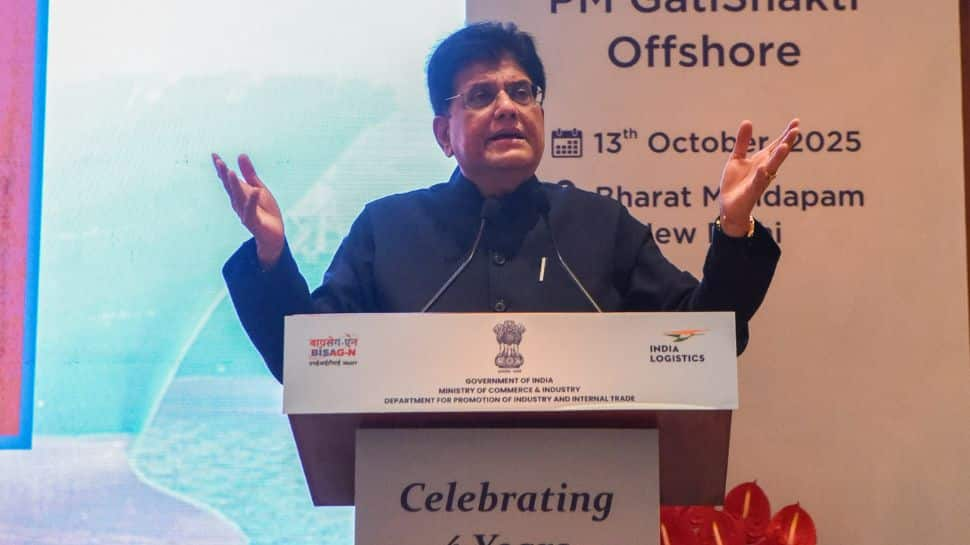Business
Women’s Employment Rate In India Jumps From 22% To 40.3% In 6 Years

New Delhi: The Ministry of Labour and Employment on Monday highlighted that India has witnessed a remarkable increase in the female workforce participation rate, based on the periodic labour force survey (PLFS) data which shows that the women’s employment rate (WPR) grew from 22 per cent in 2017-18 to 40.3 per cent in 2023-24, while the unemployment rate (UR) dropped from 5.6 per cent in 2017-18 to 3.2 per cent in 2023-24.
This shift is even more significant in rural India, where female employment has grown by 96 per cent while urban areas have seen an increase of 43 per cent in employment during the same period.
The employability of female graduates has also increased from 42 per cent in 2013 to 47.53 per cent in 2024. The employment rate (WPR) among women with postgraduate education and above has risen from 34.5 per cent in 2017-18 to 40 per cent in 2023-24, as per the statement.
According to the India Skills Report 2025, nearly 55 per cent of Indian graduates are expected to be globally employable in 2025, up from 51.2 per cent in 2024.
Additionally, EPFO payroll data further highlights the increasing participation of women in the formal sector. Over the past seven years, 1.56 crore women have joined the formal workforce. Meanwhile, e-Shram, as of August, has recorded over 16.69 crore unorganised women workers’ registrations, providing them access to various social welfare schemes of the Centre.
The ministry has highlighted that efforts by the Centre are contributing to growth in women entrepreneurs. At the national level, 70 Central schemes across 15 Ministries and more than 400 state-level schemes focus on supporting female entrepreneurship. PLFS data shows that female self-employment grew by 30 per cent – from 51.9 per cent in 2017-18 to 67.4 per cent in 2023-24, making women truly Atmanirbhar, it said.
Gender budgets have increased by 429 per cent in the last decade, rising from Rs 0.85 lakh crore in FY 2013-14 (RE) to Rs 4.49 lakh crore in FY 2025-26. This reflects a paradigm shift from women’s development to women-led development, with a strong focus on employment, employability, entrepreneurship, and welfare.
Programmes like Startup India have fostered a thriving ecosystem, with nearly 50 per cent of DPIIT-registered startups having at least one woman director, i.e., 74,410 out of over 1.54 lakh. Today, around two crore women have become Lakhpati Didi. Flagship programmes such as Namo Drone Didi, and Deendayal Antyodaya Yojana – NRLM are also playing a crucial role in this transformation, equipping them with resources and opportunities needed to drive sustainable progress, the statement pointed out.
Another important driver of the rise in women’s self-employment is PM Mudra Yojana, which is playing a crucial role in financial inclusion, with women receiving 68 per cent of the total MUDRA loans – over 35.38 crore loans worth Rs 14.72 lakh crore. Similarly, PM SVANidhi has empowered street vendors, and around 44 per cent beneficiaries are women under the scheme. These initiatives are driving a new wave of economic self-reliance among women across India.
Additionally, women-led Micro, Small, and Medium Enterprises (MSMEs) have also emerged as key drivers of economic expansion, generating over 89 lakh additional jobs for women from FY 21 to FY 23. The share of women-owned proprietary establishments has surged from 17.4 per cent in 2010-11 to 26.2 per cent in 2023-24, and the number of women-led MSMEs have also nearly doubled, growing from 1 crore in 2010-11 to 1.92 crore in 2023-24, highlighting the increasing role of women in shaping India’s economic future.
Business
OGRA Announces LPG Price Increase for December – SUCH TV

The Oil and Gas Regulatory Authority (OGRA) has approved a fresh increase in the price of liquefied petroleum gas (LPG), raising the cost for both domestic consumers and commercial users.
According to the notification issued, the LPG price has been increased by Rs7.39 per kilogram, setting the new rate at Rs209 per kg for December. As a result, the price of a domestic LPG cylinder has risen by Rs87.21, bringing the new price to Rs2,466.10.
In November, the price of LPG stood at Rs201 per kg, while the domestic cylinder was priced at Rs2,378.89.
The latest price hike is expected to put additional pressure on households already grappling with rising living costs nationwide.
Business
Private sector data: Over 2 lakh private companies closed in 5 years; govt flags monitoring for suspicious cases – The Times of India

NEW DELHI: The government on Monday said that over the past five years, more than two lakh private companies have been closed in India.According to data provided by Minister of State for Corporate Affairs Harsh Malhotra in a written reply to the Lok Sabha, a total of 2,04,268 private companies were shut down between 2020-21 and 2024-25 due to amalgamation, conversion, dissolution or being struck off from official records under the Companies Act, 2013.Regarding the rehabilitation of employees from these closed companies, the minister said there is currently no proposal before the government, as reported by PTI. In the same period, 1,85,350 companies were officially removed from government records, including 8,648 entities struck off till July 16 this fiscal year. Companies can be removed from records if they are inactive for long periods or voluntarily after fulfilling regulatory requirements.On queries about shell companies and their potential use in money laundering, Malhotra highlighted that the term “shell company” is not defined under the Companies Act, 2013. However, he added that whenever suspicious instances are reported, they are shared with other government agencies such as the Enforcement Directorate and the Income Tax Department for monitoring.A major push to remove inactive companies took place in 2022-23, when 82,125 companies were struck off during a strike-off drive by the corporate affairs ministry.The minister also highlighted the government’s broader policy to simplify and rationalize the tax system. “It is the stated policy of the government to gradually phase out exemptions and deductions while rationalising tax rates to create a simple, transparent, and equitable tax regime,” he said. He added that several reforms have been undertaken to promote investment and ease of doing business, including substantial reductions in corporate tax rates for existing and new domestic companies.
Business
Pakistan’s Textile Exports Reach Historic High in FY2025-26 – SUCH TV

Pakistan’s textile exports surged to $6.4 billion during the first four months of the 2025-26 fiscal year, marking the highest trade volume for the sector in this period.
According to the Pakistan Bureau of Statistics (PBS), value-added textile sectors were key contributors to the growth.
Knitwear exports reached $1.9 billion, while ready-made garments contributed $1.4 billion.
Significant increases were observed across several commodities: cotton yarn exports rose 7.74% to $238.9 million, and raw cotton exports jumped 100%, reaching $2.6 million from zero exports the previous year.
Other notable gains included tents, canvas, and tarpaulins, up 32.34% to $53.48 million, while ready-made garments increased 5.11% to $1.43 billion.
Exports of made-up textile articles, excluding towels and bedwear, rose 4.17%, totaling $274.75 million.
The report also mentioned that the growth in textile exports is a result of improved global demand and stability in the value of the Pakistani rupee.
-

 Sports1 week ago
Sports1 week agoWATCH: Ronaldo scores spectacular bicycle kick
-

 Entertainment1 week ago
Entertainment1 week agoWelcome to Derry’ episode 5 delivers shocking twist
-

 Politics1 week ago
Politics1 week agoWashington and Kyiv Stress Any Peace Deal Must Fully Respect Ukraine’s Sovereignty
-

 Business1 week ago
Business1 week agoKey economic data and trends that will shape Rachel Reeves’ Budget
-

 Politics1 week ago
Politics1 week ago53,000 Sikhs vote in Ottawa Khalistan Referendum amid Carney-Modi trade talks scrutiny
-

 Tech6 days ago
Tech6 days agoWake Up—the Best Black Friday Mattress Sales Are Here
-

 Fashion1 week ago
Fashion1 week agoCanada’s Lululemon unveils team Canada kit for Milano Cortina 2026
-

 Tech1 day ago
Tech1 day agoGet Your Steps In From Your Home Office With This Walking Pad—On Sale This Week














